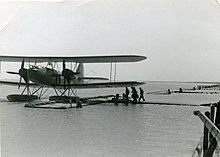
The Focke-Wulf Ta 154 Moskito was a fast twin-engined German night fighter aircraft designed by Kurt Tank and produced by Focke-Wulf during late World War II. Only a few were produced, proving to have less impressive performance than the prototypes.

The Dornier Do 335Pfeil (Arrow) is a heavy fighter built by Dornier for Germany during World War II. The Pfeil's performance was predicted to be better than other twin-engine designs due to its unique push-pull configuration and the lower aerodynamic drag of the in-line alignment of the two engines. It was Nazi Germany's fastest piston-engined aircraft of World War II. The Luftwaffe was desperate to get the design into operational use, but delays in engine deliveries meant that only a handful were delivered before the war ended.

The Arado Ar 196 was a shipboard reconnaissance low-wing monoplane aircraft designed and produced by the German aircraft manufacturer Arado. It was the standard observation floatplane of the Kriegsmarine throughout the Second World War, and was the only German seaplane to serve throughout the conflict.

The Bell P-59 Airacomet was a single-seat, twin jet-engine fighter aircraft that was designed and built by Bell Aircraft during World War II. It was the first jet produced in the United States. As the British were further along in jet engine development, they donated an engine for the United States to copy in 1941 that became the basis for the General Electric J31 jet engine used by the P-59 a year later. Because the plane was underpowered, the United States Army Air Forces (USAAF) was not impressed by its performance and canceled half of the original order for 100 fighters, using the completed aircraft as trainers. The USAAF would instead go on to select the Lockheed P-80 Shooting Star as its first operational jet fighter. Although no P-59s entered combat, the aircraft paved the way for later generations of U.S. turbojet-powered aircraft.

The Focke-Wulf Fw 58 Weihe (Harrier) was a German aircraft, built to fill a request by the Luftwaffe for a multi-role aircraft, to be used as an advanced trainer for pilots, gunners and radio operators.

The Arado Ar 68 was a single-seat biplane fighter designed and produced by the German aircraft manufacturer Arado Flugzeugwerke. It was among the first fighters produced when Germany abandoned the restrictions of the Treaty of Versailles and began rearming.
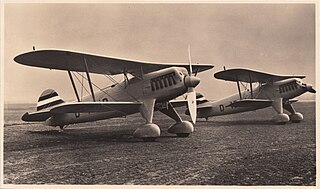
The Heinkel He 51 was a German single-seat biplane fighter aircraft. A seaplane variant and a ground-attack version were also developed. It was a development of the earlier He 49.

The Heinkel He 115 was a three-seat World War II Luftwaffe seaplane. It was used as a torpedo bomber and performed general seaplane duties, such as reconnaissance and minelaying. The aircraft was powered by two 960 PS BMW 132K nine-cylinder air-cooled radial engines. Some later models could seat four, had different engines or used different weapon arrangements.

The Fairey Seafox was a 1930s British reconnaissance floatplane designed and built by Fairey for the Fleet Air Arm. It was designed to be catapulted from the deck of a light cruiser and served in the Second World War. Sixty-six were built, with two finished without floats and used as landplanes.
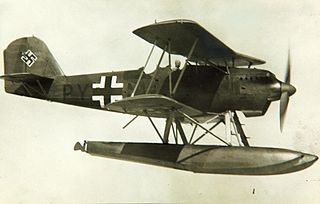
The Heinkel He 60 was a German single-engined biplane reconnaissance seaplane designed to be catapulted from Kriegsmarine warships of the 1930s.

The Heinkel He 116 was an extremely long-range mail plane designed to deliver airmail between Germany and Japan. Several examples were built for this role, as well as a small batch to be used in the long-range reconnaissance role.
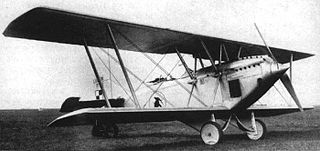
The Lublin R-VIII was a Polish bomber, reconnaissance aircraft and seaplane designed in the late 1920s by the Plage i Laśkiewicz factory in Lublin. It was the first in-house design of Plage i Laśkiewicz, and the first with the name Lublin.
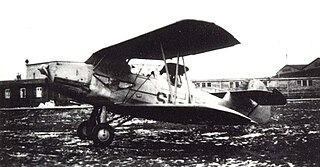
The Arado Ar 66 was a single-engined twin-seat training biplane designed and produced by the German aircraft manufacturer Arado. It was the last aircraft to be designed by the aeronautical engineer Walter Rethel in collaboration with Arado.

The CANT Z.506 Airone was a trimotor floatplane produced by CANT from 1935. It served as a transport and postal aircraft with the Italian airline "Ala Littoria". It established 10 world records in 1936 and another 10 in 1937. During World War II it was used as a reconnaissance aircraft, bomber and air-sea rescue plane, by the Italian Regia Aeronautica and Regia Marina, Aeronautica Cobelligerante del Sud, Aeronautica Nazionale Repubblicana and the Luftwaffe. The military version revealed itself to be one of the best floatplanes ever built. Despite its wooden structure it was able to operate in very rough seas. A number of Z.506S air-sea rescue aircraft remained in service until 1959.

The Heinkel He 46 was a German World War II-era monoplane designed in 1931 for the close reconnaissance and army co-operation roles. While it served with the Luftwaffe's front-line units only briefly at the start of World War II, the He 46 served as late as 1943 as a nighttime nuisance bomber and with the Hungarian Air Force.

The Arado Ar 95 was a single-engine reconnaissance and patrol biplane designed and produced by the German aircraft manufacturer Arado.

The Heinkel HD 42 50, later designated the Heinkel He 42 was a German two-seat biplane seaplane originally designed for the Deutsche Verkehrsfliegerschule, and later built for the German Luftwaffe. The aircraft was used until the end of World War II as a trainer for maritime pilots.

The Fokker T.IV was a Dutch torpedo bomber/maritime reconnaissance floatplane of the 1920s and 1930s. First flying in 1927, it served with the Dutch Naval Aviation Service in the Dutch East Indies until the remaining aircraft were destroyed during the Japanese invasion in 1942.

The Blohm & Voss Ha 140 was a German multi-purpose seaplane first flown in 1937. It was intended for use as a torpedo bomber or long-range reconnaissance aircraft but did not enter production.
The Bloch MB.480 was a French twin-engined torpedo-bomber/reconnaissance floatplane designed just before the start of the Second World War by Société des Avions Marcel Bloch. Only two were built, the French Navy deciding to use landplanes instead.

